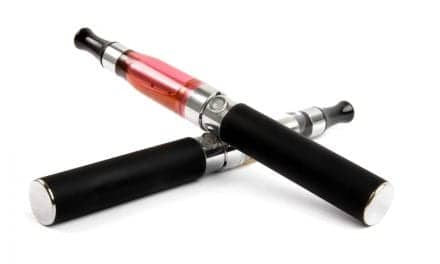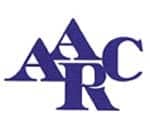A 3-month-old patient with bronchopulmonary dysplasia benefited from helium-oxygen therapy.

The signs and symptoms of bronchiolitis include tachypnea, cough, chest retractions, prolonged expiratory time, wheezing, rales, and hyperinflation of the lung seen in chest radiographs. Infants in moderate distress are often admitted to the hospital for intravenous fluids, oxygen, and nasal suction. Bronchodilators are often used, as well, although their clinical benefit is questionable.
Criteria for admission to the pediatric ICU (PICU) usually include one or more of the following: greatly diminished air exchange, cyanosis of the lips and mucous membranes when the patient is breathing room air, respiratory pauses or apnea, exhaustion by expiratory obstruction, and respiratory or metabolic acidosis.3 In some cases, the patient will progress to impending or complete respiratory failure. In such cases, mechanical ventilation will be necessary to reverse acidosis and hypoxemia and relieve respiratory distress.
Helium is an inert gas. It has no direct bronchodilatory or anti-inflammatory effects. Helium-oxygen is a low-density gas mixture. It use was first described by Barach4 in 1935 to relieve airway obstruction. Helium-oxygen is nontoxic and has been demonstrated to be safe. According to Poiseuille’s law, resistance to airflow through an orifice is directly related to the density of the gas. Inhalation of gas with a low density, such as helium-oxygen, can reduce airway resistance and the pressure required to overcome the resistance. Graham’s law dictates that flow will vary inversely with the square root of density. The reduced density of helium-oxygen gives it the potential to increase expiratory flow by as much as 50%. Increased expiratory flow results in decreased lung hyperinflation and auto–positive end-expiratory pressure (PEEP). Returning the lung to an appropriate functional residual capacity (FRC) improves the compliance of the lung and allows ventilation at lower peak pressures.
More pressure is required to maintain turbulent flow than laminar flow. Turbulent flow increases airway resistance and predominates in the large airways down to the bronchioles. In the bronchioles that have a diameter of less than 2 mm, gas flow becomes laminar and is no longer density dependent. The Reynolds number is the ratio of kinetic to viscous forces of a gas; it predicts whether gas flow will be laminar or turbulent. The decreased density of helium-oxygen lowers the Reynolds number and has the potential to convert turbulent flow to laminar flow, with a resultant decrease in airway pressures.5
Mechanical ventilation is required by a large number of infants with RSV bronchiolitis each year. Many of them have underlying lung or cardiac disease and a history of mechanical ventilation. For a percentage of infants, RSV bronchiolitis is a fatal disease. The case that follows illustrates the effectiveness of 60% helium and 40% oxygen in treating a mechanically ventilated infant with RSV bronchiolitis.
Case Summary
The patient was a twin 3 months and 23 days old. She weighed 2.8 kg and had been born at 28 weeks’ gestation. She was at home and had a diagnosis of bronchopulmonary dysplasia. She was using aminophylline and an apnea monitor at the time of this illness. She had a 2-day history of cough, congestion, and circumoral cyanosis. On the advice of the patient’s pediatrician, her mother drove the infant and her twin to the local emergency department. En route, the infant became apneic, and the mother was forced to pull to the side of the road. A passing motorist pulled over to assist her and transported the infant in his vehicle while his passenger provided mouth-to-mouth resuscitation. Upon arrival in the emergency department, the infant was assessed and was still experiencing periods of apnea. She was intubated and supported using manual ventilation, and the Children’s Hospital transport team was called. She was then transported without incident to the PICU of Children’s Hospital, San Diego. Upon admission, pressure-synchronized intermittent mandatory ventilation was initiated with a peak inspiratory pressure of 39 cm H2O, a PEEP of 5 cm H2O, a respiratory rate of 25 breaths per minutes, an inspiratory time of 0.8 seconds, and a fraction of inspired oxygen (Fio2) of 50%. The patient was paralyzed and sedated. Her heart rate was 160 beats per minute, her blood pressure was 85/45, and she was afebrile.
The infant had diffuse wheezes throughout all lung fields. Racemic epinephrine was given via small-volume nebulizer; there was improvement in chest expansion, tidal volume, and breath sounds. The ventilator provided online measurements of resistance, compliance, and auto-PEEP using the least-squares-fit method. After the administration of racemic epinephrine, airway resistance decreased from 85 cm H2O/L per second to 58 cm H2O/L per second.
Venous blood-gas analysis results showed a pH of 7.24, a Pco2 of 54 mm Hg, a base excess of 4.5, a Po2 of 46 mm Hg, and an oxygen saturation of 100%. A chest radiograph showed right upper-lobe atelectasis and hyperinflation. Laboratory reports confirmed the patient to be RSV positive. During the evening, the patient’s blood-gas levels deteriorated. She was found to have severe respiratory acidosis, and helium-oxygen therapy was initiated. The infant’s ventilation improved dramatically upon the addition of helium-oxygen, with no change in ventilator settings or other therapies administered. Helium-oxygen was discontinued and restarted several times during this infant’s course of ventilation. Each time the helium-oxygen was stopped, the venous Pco2 increased to nearly 100 mm Hg. Restarting the helium-oxygen returned the venous Pco2 and pH to levels that mirrored the initial results. On the 17th hospital day, the patient was successfully extubated and began using a helium-oxygen nasal cannula. The helium-oxygen was discontinued on the following day. The patient was discharged to her home on the 20th hospital day, breathing room air and using aminophylline.
Discussion
Helium-oxygen has been used in the PICU for many years to treat large-airway obstruction (due, for example, to viral croup or postextubation stridor).6 Its use and applications have been expanding rapidly over the past 10 years, especially in children (who can have the greatest degree of airway compromise). Helium-oxygen as a treatment for bronchiolitis has only recently been documented. Hollman et al2 studied 18 nonintubated children admitted to a PICU for severe RSV infections of the lower respiratory tract. They found that helium-oxygen improved clinical asthma scores. Only one subject went on to require mechanical ventilation. It is important to note that the sickest patients had the greatest response to helium-oxygen, which should probably be reserved for the patients with impending or complete respiratory failure.
Brown7 has also documented the effectiveness of helium-oxygen in conjunction with a nasal continuous positive airway pressure (CPAP) generator in preventing respiratory failure and subsequent intubation in an infant with RSV bronchiolitis. The combination of helium-oxygen and nasal CPAP could dramatically decrease the intubation rate for this disease process, shorten hospital stays, and minimize complications. More research is needed to examine the benefits of these therapies delivered individually, as well as concomitantly. For the percentage of infants with bronchiolitis who still require mechanical ventilation, studies need to be done to determine whether helium-oxygen can influence morbidity and mortality.
Children with bronchiolitis typically suffer from bronchoconstriction and obstruction of the small airways. This leads to poor ventilation and to ventilation-perfusion mismatching. Increasing the ventilation to these areas can result in improved gas exchange. Bronchiolitis patients also typically suffer from air trapping, or auto-PEEP (gas that remains in the lungs, above the FRC, at the end of exhalation). Auto-PEEP can significantly contribute to the patient’s work of breathing, predisposes the patient to barotrauma, and can lead to hemodynamic compromise. Auto-PEEP in the ventilated patient can also make it difficult for the patient to trigger a ventilator breath. The increased expiratory flow rates seen with the use of helium-oxygen can alleviate auto-PEEP. As lung volumes return to normal, the work of breathing decreases and pulmonary compliance increases, enlarging the tidal volume that can be generated per cm H2O. Turbulent flow is prevalent in children with bronchiolitis. Helium-oxygen gas mixtures have a lower density than nitrogen-oxygen. Using a lower-density gas reduces the Reynolds number and enables the turbulent flow to be converted to laminar flow. This gas property may decrease resistance and the driving pressures needed to ventilate the bronchiolitic lung.
Helium-oxygen may have beneficial effects even in areas where flow is not turbulent. Carbon dioxide diffuses four to five times faster in helium-oxygen than in nitrogen-oxygen. Therefore, a greater amount of carbon dioxide will be eliminated in helium-oxygen per unit of time.5 This may well be the mechanism that makes helium-oxygen delivery through the high-frequency oscillator and nasal CPAP devices effective.
Helium-oxygen can be used effectively with asthma patients and mechanical ventilators. Kass and Castriotta8 studied 12 adult asthma patients, five of whom received helium-oxygen through a ventilator. For the entire group, the mean Pco2 decreased from 57.9 to 47.5 mm Hg. Arterial pH increased from 7.23 to 7.32. Kudakis et al9 studied 18 nonintubated children with asthma and found that helium-oxygen breathing significantly decreased pulsus paradoxus and dyspnea. Helium-oxygen breathing also increased peak flows. Mechanical ventilation was averted in three patients who would have required intubation without helium-oxygen.
Helium-oxygen does affect the function of ventilators, and it is important for the clinician to be familiar with these effects. Not all ventilators are capable of delivering helium-oxygen. For the most part, ventilators that measure flow with hot-wire anemometers are very poor delivery devices for helium-oxygen.10 Some will fail completely. Although some will function in pressure modes only (after the removal of flow sensors and volume monitoring by the clinician), this course does not seem prudent. Excellent pulmonary function monitoring can be invaluable in managing these critically ill patients. It is important to note that gas density will not affect pressure-monitor accuracy. The ventilator used for this infant functions well in the presence of helium-oxygen with accurate oxygen analysis10 and monitoring capabilities. With the addition of helium-oxygen, regardless of ventilator brand, tidal-volume measurements are erroneous. Published correction factors should be used, as well as clinical assessment skills. One pulmonary function monitor offers the unique ability to provide accurate tidal-volume measuring in the presence of helium-oxygen.
Manthous et al11 states that the helium concentration must be high (at least 70%) to have a positive effect on reducing airway resistance. Unfortunately, this widely held belief may discourage clinicians from attempting helium-oxygen therapy for patients with compromised oxygenation, as well as ventilation. This case study illustrates that 60% helium can also have dramatic effects. Brewer and Brown12 documented the case of a mechanically ventilated adult asthma patient who also responded to 60% helium. Helium concentrations as low as 20% have been reported to be effective when used in conjunction with high-frequency oscillatory ventilation.13 More research needs to be done to determine what the lowest effective helium-oxygen concentration is with each delivery device.
Ventilation-perfusion mismatching can contribute to hypoxemia, as well as hypercarbia. Helium-oxygen may improve oxygenation for patients with ventilation-perfusion mismatching. Schaeffer et al14 performed a retrospective case-match study examining the alveolar-arterial gradient of 22 intubated adults and children with status asthmaticus, 11 of whom received helium-oxygen. The alveolar-arterial gradient was similar for both groups at baseline. The alveolar-arterial gradient for the group receiving helium-oxygen therapy improved significantly, whereas that of the control group did not. The improvement in the helium-oxygen group enabled the Fio2 to be reduced from 0.8±0.2 initially to 0.4±0.1 by the second blood-gas determination. Reducing the Fio2 for these patients allows the delivery of higher concentrations of helium-oxygen. This, in turn, can lead to improved ventilation-perfusion matching, better oxygenation, and the ability to increase the helium-oxygen concentration incrementally. These results should encourage clinicians to attempt helium-oxygen therapy, even if the patient initially has a high oxygen requirement. The potential for helium-oxygen to have a positive effect in disease processes where oxygenation is the primary problem should be explored.
Helium has six times the thermal conductivity of air.5 There is a risk of increased heat loss for the patient during helium-oxygen delivery. Helium-oxygen gases should be humidified and warmed to body temperature. This property can be especially significant in the small infant or neonate, who is especially vulnerable to cold stress. At least one new generation nasal CPAP unit is an effective device for delivering warmed, humidified helium-oxygen gases to the nonintubated infant via heated-wire circuit and humidifier. Proper humidification should always be used for the mechanically ventilated patient, as well. Delivering helium-oxygen without proper warmth and humidity could lead to increased difficulty with thick, dried secretions and could further obstruct the airways of an infant with bronchiolitis.
Helium-oxygen has no curative effects. Its real value is in buying time for other therapies to work and in allowing disease processes to resolve themselves. Although PICUs are the main users of helium-oxygen, there is no large body of work describing its applications and effectiveness in bronchiolitis. Helium-oxygen is spreading into the adult arena, especially with noninvasive ventilation for asthma and chronic obstructive pulmonary disease (COPD).15 Due to the large numbers of patients who have COPD and could potentially benefit from helium-oxygen treatment, it may someday be a standard procedure in adult ICUs. Its high-frequency–ventilation applications should interest neonatal ICUs and constitute an exciting area of research. Much more work is yet to be done in exploring the potential of helium-oxygen therapy.
Melissa K. Brown, RRT, is a neonatal intensive care unit clinical specialist, Sharp Mary Birch Hospital for Women, San Diego. This case study was originally published in abstract form (Respir Care. 1999;44:1287) and was presented at the American Association for Respiratory Care’s 45th International Respiratory Congress on December 16, 1999, in Las Vegas.
References
1. Soong W, Betau H, Ren-Bin T. Continuous positive airway pressure by nasal prongs in bronchiolitis. Pediatr Pulmonol. 1993;16:163-166.
2. Hollman G, Shen G, Zeng L, et al. Helium-oxygen improves clinical asthma scores in children with acute bronchiolits. Crit Care Med. 1998;26:1731-1736.
3. Lebel M, Gauther M, Lacroix J, Rousseau E, Buithieu M. Respiratory failure and mechanical ventilation in severe bronchiolitis. Arch Dis Child. 1989;64:1431-1437.
4. Barach AL. The use of helium as a new therapeutic gas. Anesth Analg. 1935;14:210- 213.
5. Tobias JD. Heliox in children with airway obstruction. Pediatr Emerg Care. 1997;13:29-32.
6. Kemper KJ, Ritz RH, Benson MS, et al. Helium-oxygen in the treatment of post extubation stridor in pediatric trauma patients. Crit Care Med. 1991;19:356-359.
7. Brown MK. Aladdin11 nCPAP system with heliox decreased respiratory distress and prevented intubation in an infant with RSV bronchiolitis [abstract]. Respir Care. 2000;45:1007.
8. Kass JE, Castriotta RJ. Heliox therapy in acute asthma. Chest. 1995;107:757-760.
9. Kudakis TM, Manthous CA, Schmidt GA, et al. Inhaled helium-oxygen revisited: effect of inhaled helium-oxygen during the treatment of status asthmaticus in children. J Pediatr. 1997;130:217-224.
10. Tassaux D, Jolliet P, Thouret JM, Roeseler J, Dorne R, Chevrolet JC. Calibration of seven ICU ventilators for mechanical ventilation with helium-oxygen mixtures. Am J Respir Crit Care Med. 1999;160:22-32.
11. Manthous C, Morgan S, Pohlman A, et al. Heliox in the treatment of airflow obstruction: a critical review of the literature. Respir Care. 1997;42:1034-1041.
12. Brewer JA, Brown MK. Heliox: a mixture of 60/40 is effective in the adult asthmatic [abstract]. Respir Care. 2000;44:1020.
13. Winters JW, Willig MA, Sanfilippo D. Heliox improves ventilation during high frequency oscillatory ventilation in pediatric patients. Pediatric Critical Care Medicine. 2000;1:33-37.
14. Schaeffer EM, Pohlman A, Morgan S, et al. Oxygenation in status asthmaticus improves during ventilation with helium-oxygen. Crit Care Med.1999;27:2666-2670.
15. Jolliet P, Tassaux D, Thouret J, et al. Beneficial effects of helium:oxygen versus air:oxygen noninvasive pressure support in patients with decompensated chronic obstructive pulmonary disease. Crit Care Med. 1999;27:2422-2429.









